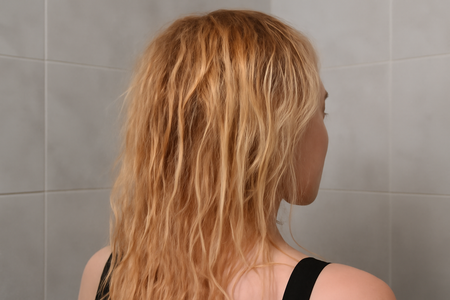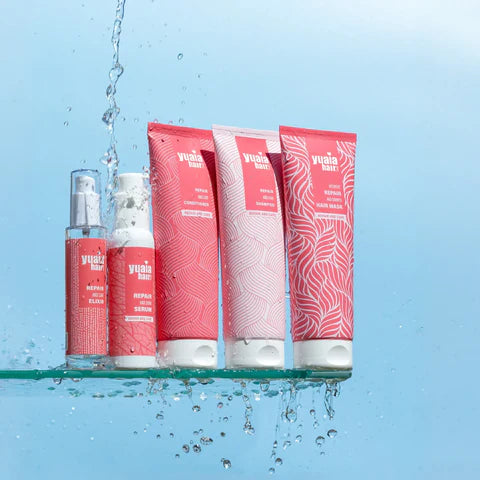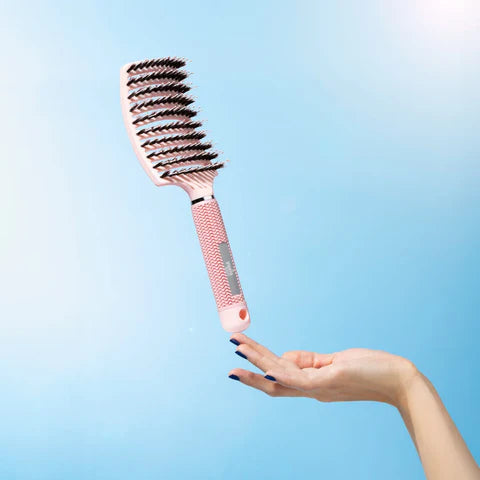
Key visual and physical signs
Identifying over-processed hair starts with understanding its visual and physical characteristics. One of the most noticeable signs is the texture and feel of the hair. Over-processed hair often feels dry and brittle, much like straw. This rough texture results from the hair's protective outer layer being compromised by excessive chemical treatments and heat styling.
Another telltale sign is the loss of shine. Healthy hair naturally reflects light, giving it a glossy appearance. However, over-processed hair lacks this luster, appearing dull and lifeless. This dullness not only affects the hair's aesthetic appeal but also indicates a lack of moisture and vitality.
Split ends and breakage are common issues with over-processed hair. When the hair's structural integrity is weakened, it becomes prone to splitting and breaking. This can make it difficult to grow out hair, as the ends are constantly breaking off.
Tangling and styling challenges are also prevalent. Over-processed hair tends to tangle easily, making brushing and styling a frustrating experience. The weakened hair can struggle to hold styles, often leading to a limp appearance. For those with curly hair, using a product like our Twirl and Curl curly cream can help define curls and reduce frizz, making styling more manageable.
Frizz and uneven texture are additional indicators of over-processing. The hair may have sections that are frizzy, while other parts appear limp, resulting in an uneven texture. This inconsistency can make it challenging to achieve a cohesive style.
Finally, over-processed hair often loses its elasticity and body. Hair that once had bounce and volume may now hang flat and feel limp. This loss of elasticity means the hair doesn't spring back into shape easily, making it more susceptible to damage.
Styling and management issues
Over-processed hair presents numerous styling and management challenges. One significant issue is increased product absorption. Damaged hair tends to soak up more product than healthy hair, which can lead to a buildup that weighs the hair down and makes it look greasy or heavy.
Maintaining styles becomes difficult with over-processed hair. The weakened state of the hair means that it struggles to hold styles, whether it's curls, waves, or straightened looks. The hair may fall flat or lose its shape quickly, requiring frequent touch-ups.
To mitigate these issues, incorporating a gentle hair care routine is essential. Using nourishing products can help restore some moisture and manageability. For instance, applying our rosemary hair oil can provide hydration and improve the overall feel of the hair, making styling easier.
In conclusion, recognizing the signs of over-processed hair is the first step in addressing and managing the damage. By understanding these visual and physical indicators, individuals can take proactive measures to restore their hair's health and appearance.
Preventive measures and recovery tips
Dealing with over-processed hair can be challenging, but adopting gentle hair care practices can make a significant difference. Opt for sulfate- and silicone-free shampoos and conditioners to minimize further damage. These products help maintain the hair's natural oils and prevent additional drying.
At Yuaia Haircare, we offer the rosemary hair oil, which is an excellent choice for nourishing and hydrating damaged hair. Regular use of this oil can help restore moisture balance and improve hair texture, making it more manageable over time.
Additionally, using the right brushing techniques is crucial. Our Curvy Brush is made to gently detangle without causing further breakage. Its boar bristles help distribute natural oils throughout the hair, enhancing shine and smoothness.
Real-life stories: Personal recovery journeys
Many have faced the daunting task of reviving over-processed hair. One inspiring story comes from a customer who, after years of frequent coloring and heat styling, found her hair lifeless and brittle. She began using a regimen of gentle, nourishing products and focused on reducing heat exposure. Over time, her hair regained its shine and strength, proving that recovery is possible with patience and consistent care.
Frequently asked questions
How can I tell if my hair is over-processed?
Over-processed hair often feels dry, brittle, and rough. It may lack shine, have visible split ends, and be prone to tangling. If your hair absorbs products quickly and struggles to hold styles, these could also be signs of over-processing.
What should I avoid to prevent over-processing?
To prevent over-processing, limit the use of heat styling tools and chemical treatments. When using heat, always apply a heat protectant to shield your hair from damage.
Can over-processed hair be repaired?
Yes, over-processed hair can be repaired over time with consistent, gentle care. Focus on using nourishing products, reducing heat exposure, and adopting a healthy hair care routine. Patience and dedication are key to restoring your hair's health.
 2-5 päivän toimitus
2-5 päivän toimitus
 25 000+ tyytyväistä asiakasta
25 000+ tyytyväistä asiakasta
 Tyytyväisyystakuu
Tyytyväisyystakuu












